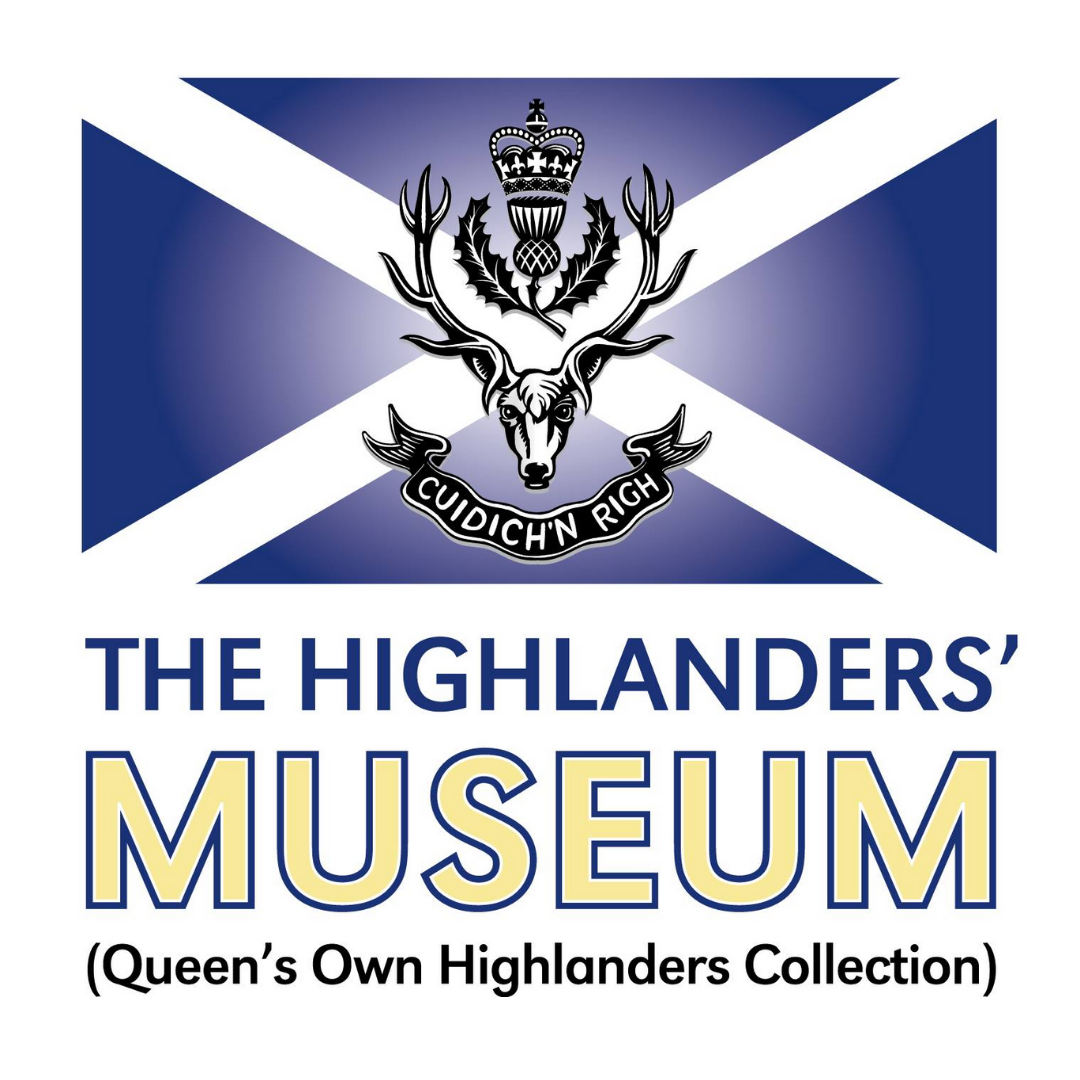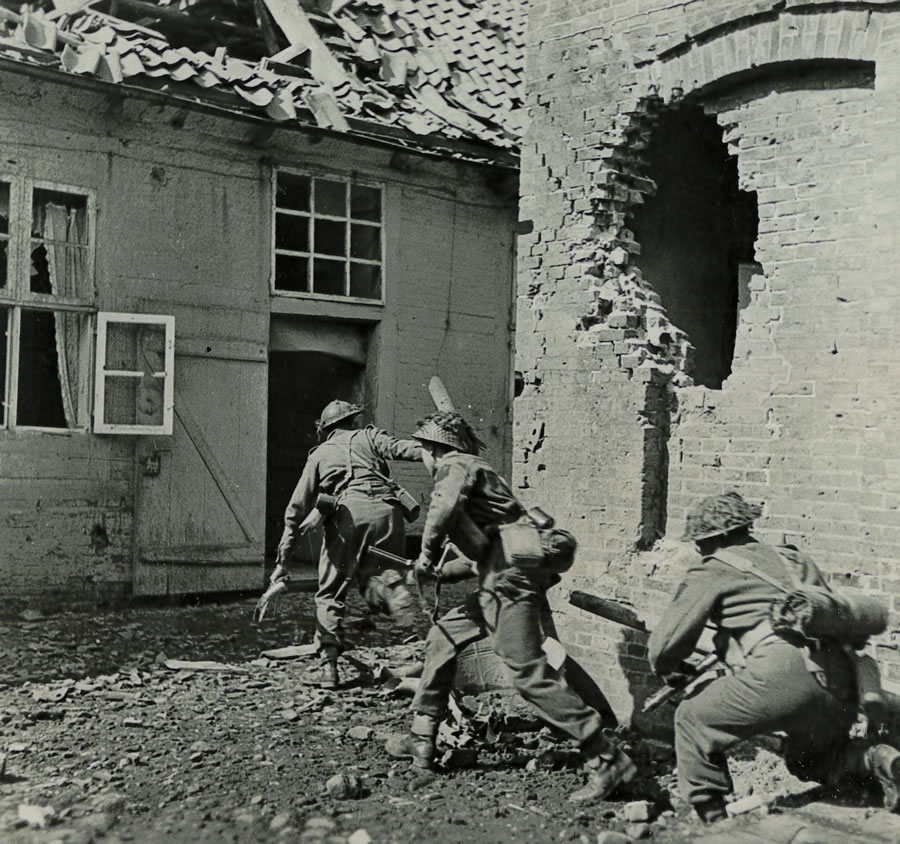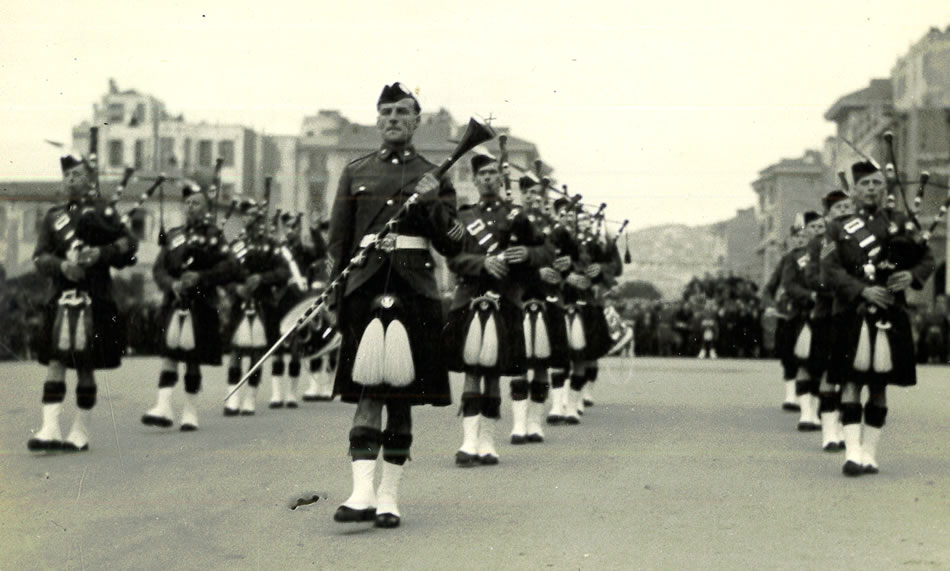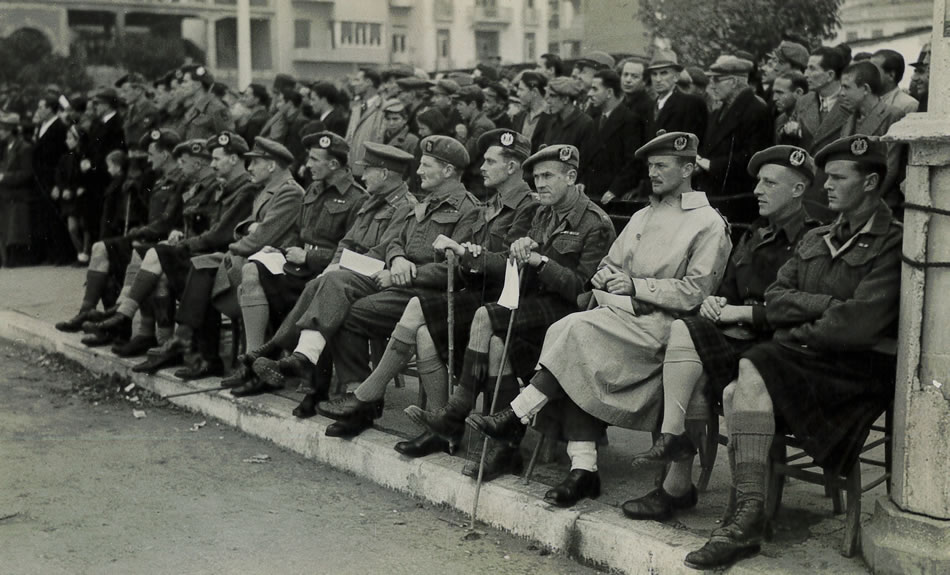VE Day 80th Anniversary
The Last Days
Four battalions of Seaforth Highlanders and two from the Queens Own Cameron Highlanders (QOCH) were in Europe on the day Victory was declared. In this blog we delve in to each Battalion’s war diary to discover what they were doing in the days and hours prior to Germany’s unconditional surrender on what we now celebrate as VE Day, 8th May 1945.
In fact, the fighting had largely ceased several days prior to that. On 4th May, news reached the front lines that Montgomery had reached an agreement whereby all German forces in North West Europe would lay down their arms, effective 08:00 on 5th May. The surrender document to that effect was co-signed by Fields Marshall Keitel and Montgomery in the early hours of 7th May, but it was not recognized by the Soviet Union as it did not include German troops still fighting in the East, so a second unconditional ‘Instrument of Surrender’ covering all German military forces did not come in to effect until 23:01 on 8th May.
2nd and 5th Seaforths and 5th QOCH made up the 152nd (Highland) Brigade of the legendary 51st Highland Division. By the end of April1945, the 152ndwere at Selsingen, in North-West Germany, at the centre of a peninsular between the rivers Weser and Elbe, with the remnants of the German Army in the two main ports, Bremerhaven and Cuxhaven, at the mouths of these rivers. Their backs to the North Sea, the Germans were trapped but in a strong defensive position. Meandering across the front line was the river Oste and only crossable at a place called Bremervorde. The 51st Highland Division were ordered to capture the town, an order that was received with mixed feelings. On the one hand, the men knew that one final push would see the Germans defeated. On the other, having survived three years hard fighting through North Africa, Italy, Holland and across the Rhine, no one wanted to become the last casualty when the end was only a matter of days away.
2nd Seaforth were given the task of securing the bridges. Fortunately for the men, the local German garrison could see the writing on the wall and withdrew leaving the bridges undefended, and by 07:00 on 2nd May a bridgeheadhad been secured, allowing the 5th Seaforths to pass through and secure the rest of the town, as their war diary states:
Like the two Seaforth battalions in 152nd Brigade, the 5th QOCH were also in action right up to 4th May around Granstedt and Glinde, near Bremerhaven. Their last casualtywas Private WH Brownlee, killed on 30th April attempting to retrieve photographic equipment from a jeep carrying war correspondents that had been fired upon.
After a jubilant night (Bremervorde was apparently well stocked with liquor) and “great rejoicing, much firing of tracer and bright lights”, the Divisional Commander Maj-General MacMillan addressed the Brigadeon 5th May and a parade and thanksgiving service was held in Bremervorde church on Sunday 6th.
On 8th May the 2nd Seaforths moved out to Drangstedt to take over responsibility for guarding German ammunition dumps and 5th Seaforth moved to Wehden to take up billets vacated by the Germans the day before. The 5th QOCH moved to Cuxhaven for general occupation duties. In the days following recreational parties were sent to Wesermunde for cinema and theatre, and the Sergeant’s Mess opened. Black out restrictions were lifted on 15thMay but the Officers had to wait until 22nd May before an Officers Club was opened in Cuxhaven.
On 12th May the whole Division took part in a Victory march past in Bremerhaven.The QOCH diary proudly notes that “5th Camerons supplied the only fully kilted contingent on parade”.The salute was taken by Lt. General Brian Horrocks, CB, DSO, MC , General Officer Commanding 30 Corps (memorably played by Edward Fox in A Bridge too Far).
Elsewhere in Germany the 6th and 7th Seaforths had a relatively quiet end to the war. 6th Seaforths were part of 17th Brigade, 5thInfantry Division, the most travelled British formation during WWII. On 2 March 1945, they arrived in Marseille, France, and moved north to join the Allied advance through Belgium and across the river Elbe into Germany. The battalion had not met any serious resistance since end-April and their last casualty was Private W.Cameron of D Company, killed in an attack on Oldendorf on 21st April. By the beginning of May they were in Lubeck, north-east of Hamburg, guarding dumps, stores and vantage points. On 8th May, the Battalion was represented at a march past parade in the main square of Lubeck and attended the “unfurling of Union Jack on occasion of VE Day”.
7th Seaforths were part of 46th Brigade, 15th (Scottish) Infantry Division, the only Division to assault across all the main rivers Seine, Rhine and Elbe on their advance through Europe. On 4th May the 15th Division moved in the direction of Lubeck. 46th Brigade halted in the Spenze area and 7th Seaforths moved in to the harbour area at Molihagen, where they received the message that German forces were to surrender the following day. A Battalion Church Parade and thanksgiving service was held on 6th May and the Battalion prepared to move to Kiel for occupation duties. At 07:30 on 7th May, three hours after Montgomery had signed the first German surrender document, the Battalion moved out as their War Diary records “in best battledress”. After crossing the canal, the Battalion spent VE Day taking over German sentry posts, collecting and destroying weapons and ammunition and establishing lines of control for the many thousands of displaced persons trying to return home. A simple line in the diary, dated and timed 9th May 00:01 states “European surrender of German forces takes effect”. The time and date reflects the fact that the Russian time zone in the East was an hour ahead of the British and Americans in the West.
The 2nd Battalion QOCH was in Europe but not in Germany on VE Day. Part of 11th Brigade, 4th (Indian) Division, the 2nd Camerons had fought in North Africa and Italy with 8th Army. After the German withdrawal from Greece in October 1944, the British provided a military force to supervise democratic elections and control the surrender of weapons from the resistance movement. 2nd Camerons moved to Greece in November 1944 and by May 1945 were in Struma Valley, in modern-day Bulgaria, by strange coincidence the same place where they had been when WWI had ended 27 years previously. Operations consisted of patrols and disarming the various rival factions, but there was time for recreation, ‘A’Company held their sports day on 2nd May and ‘S’Company on 3rd, where “the donkey race proved the highlight of the programme”. The Diary makes no reference to events in Germany but a Drum Head Service was held on 6th May in Serrai Barracks, to give thanks for the Victories in Italy. The week before had been the Greek Orthodox Easter and the most pressing issue facing the Battalion was investigating a local brawl “due to over-indulgence during the Easter celebrations”. Meanwhile the Battalion awaited the formal cessation of hostilities in Germany and on 8th May, HQ noted:
“An eager crowd gathered around wireless sets in canteen and Sgts Mess to hear the PM’s announcement. It was received with sobriety and restraint. It was difficult to realise that after five and half years the war in Europe had really come to a successful conclusion. There was an atmosphere of profound relief and thankfulness. More enthusiasm, however, was displayed at night when a large bonfire was lit and Officers, NCO’s and men gathered round for a sing-song led by the Padre”.
So, each Battalion marked VE Day in its own way and reflected on what had been a life changing experience for all. Captain Alastair Borthwick, the 5th Seaforths Intelligence Officer had been a journalist before the war. He had been tasked with inspecting the German billets in Wehden and commented in his book Battalion how the German staff gave him every assistance. He writes how his driver had been greatly moved by the courtesy shown and was very thoughtful as they drove back to their own lines. “Well sir” he said, “I guess the war must be over”. “Yes”, I said “I suppose it must”.
Craig Durham
Highlanders Museum Volunteer







